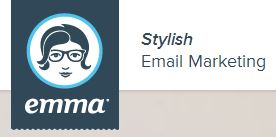When parents welcome a new baby into the world, they grace their child with a name. My parents chose Emma, and that name followed me through infancy to school to college, and then to adult life.
Names conjure up certain ideas and preconceptions, whether we like it or not.
A name’s important, and not just for people. Businesses are faced with naming their companies, products, features, pages, and more, but what names lead to trust, authority, and conversion? How do we choose good names?
Here are some tips for naming that will help your company increase conversions.
1. Be true to your product and audience
If you’re selling fences, you probably have them up on your website as “barbed wire, white picket, and farm fencing,” right?
That’s because fence-buyers have preconceived notions of what they want. It doesn’t make sense to exchange “White Picket” for “Executive Fence.”
It’s easy when your products are physical, but many of today’s companies offer products and services that are less tangible. Even still, these services need to be named with the audience in mind using language that potential customers will understand.
A business audience is different from average consumers, which is why a company like Crazy Egg has chosen to name their products “Basic, Standard, Plus, and Pro.” These familiar and corporate-sounding names help decision-makers quickly choose the plan that’s right for them.
When you choose a name:
- Consider audience expectations
- Don’t be afraid to be conventional
- Remember that naming a plan “Standard” is like naming your son “John” (and that’s ok!)
2. Hint at future growth
You want a name to hint at possibility, to make customers feel as though your product or service is going to help them reach their goals.
That’s why it makes sense to name products and plans things like “Grow, Create, or Build.” These are more positive and optimistic than “Standard, Basic, or Premium.”
Grasshopper, the entrepreneur’s phone system, does an excellent job of hinting at future growth in their product names. The company caters to entrepreneurs and small business owners who choose Grasshopper because they want to sound professional as they gain speed.
Grasshopper has four plans: Pay As You Grow, RAMP, GROW, and MAX. Companies looking for future growth—Grasshopper’s prospective customers—are likely to choose an optimistic and future-thinking product.
When you choose a name:
- Consider what your product does and how it will help customers
- Inject some positivity and future-thinking optimism
- Remember that naming a company or product after a bug can work!
3. Don’t be afraid of change
If your name’s not working for you, don’t be afraid to make a switch. Sure, it’s a huge undertaking to change your name from MarketingSolutions to TreeHop, but that doesn’t mean you shouldn’t do it.
Moz, formerly SEOmoz, is a great example. The company recently changed its name, citing a diminishing reputation of “SEO” and a need for transparency. The company also wanted a name that was easy to spell and market.
Ultimately, the company leaders wanted something that better represented their brand.
Moz changed their company name on the same day they released a new version of Moz Analytics and a new website. The name change accompanied a new product, and a new statement of company vision.
If you’re going to follow suit and change your name, take a note from Moz. Build a plan, explain your reasoning, and consider releasing a new product, service, or update at the same time.
A name change is sometimes a great PR move, but it must be planned and executed with finesse.
When you choose (or change) a name:
- Make sure you have a strategy
- Be 100% satisfied with your new name
- Have a darn good reason to switch
4. Make names easy to spell (and say!)
If your company or product names are a mouthful or are laden with odd letter combinations, it might be time to step back and consider a name change or an alternate URL. If you’re marketing your product on the radio, or even through video, it’s pretty important that your name is easy to spell.
If you have an easy name, people can easily link to you, find your website, connect with you on social media, and remember your name off the cuff. You don’t want people saying, “There’s this great company, but what are they called?”
Here are some examples of company names that are easy to spell and say:
Here are a few that are more difficult:
- Gilt (Is it Gilt or Guilt?)
- Codecademy (Is it pronounced Code Academy?)
- ColourLovers (Oops, I keep misspelling it because I’m not in the UK!)
If your company has a difficult or unique name, be sure to compensate. Prioritize consistency. If you use an alternate spelling, use it all over your site. Make sure your product names are easy to spell and that your website copy is simple and clear.
When you choose a name:
- Imagine how it would sound on the radio
- Be consistent. Use “color” or “colour,” not both.
- Prepare to overcompensate if your name is difficult
5. Find Ways to Integrate Your Company Name
You should use your name for more than just your logo, especially if your name is cute and clever. MailChimp and Emma Email both use their company names in creative ways that boost branding.
If you’re a MailChimp user and you log into your account, you’ll be greeted by a cute monkey. He’s always saying something funny that makes customers smile. He takes the name MailChimp to a new level, showing pizzazz and personality.
Emma Email is another email marketing company with a name that goes beyond convention. The company’s logo is an image of a sophisticated, glasses-wearing girl. Guess what her name is? Emma.
Emma’s Get To Know Us Page explains why the name was chosen:
“There is no actual Emma here, though we have an Emily, an Erin and a Jerry. The name “Emma” (beyond being a handy abbreviation for email marketing) speaks to our goal of making the web-based experience more approachable and more personable. Emma has an inherently human quality to it, after all. It’s a real name — like Antoinette or Frederick, only shorter.”
When you choose a name:
- Consider creative ways to integrate it into your brand
- Go beyond a logo and use a name to inject personality
- Think about how you can use it to be more human
Be Name Smart
It turns out, there’s a lot to be gained if you pay attention to naming conventions. A name allows people to talk about your product and service effortlessly, and it can position you above the competition.
Coming up with creative names for your products and services, as well as finding creative uses of these names, can help you gain more conversions and keep customers happy.
Go forth and start naming!




















